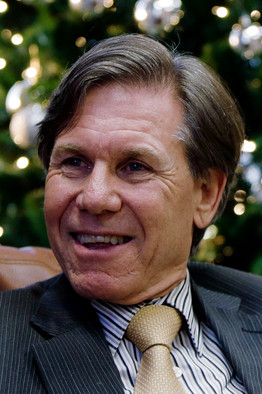

Photo from Reuters
The USPTO has been gradually improving under Michelle Lee, who sought positive reform and is said to be on her way out after Trump's inauguration. The former Director, David Kappos, is now lobbying (in exchange for money!) to make things worse again. It looks as though Trump is about to blow away any progress with Rader as Director (or similar position). Rader is not only corrupt but is also a software patents proponent.
USPTO Releases its 2016 Performance and Accountability Report
I’m pleased to announce that the USPTO has published its Performance and Accountability Report (PAR) for fiscal year (FY) 2016. The PAR serves as the USPTO’s annual report, similar to what private sector companies prepare for their shareholders. Each year the USPTO publishes this report to update the public on our performance and financial health.
[...]
We will continue efforts in the Enhanced Patent Quality Initiative, which is a multifaceted initiative that builds on past efforts and includes future programs aimed at improving the accuracy, clarity, and consistency of patents; continue implementation of the patent dispute resolution portions of the AIA; meet the wave of legal challenges to the USPTO’s interpretation of the AIA and its regulations implementing the statute; develop outreach at both headquarters and regional offices; expand on dissemination of data; attain and maintain full sustainable funding; and provide IT support for a nationwide workforce with a “24/7/365” operational capability.
In summary, there is a plausible case that the US law on obviousness is indeed compatible with the above-explained EPO problem-and-solution approach. It could even be said that the steps of the problem-and-solution approach appear to have been inspired by US law and practice!
Under present working styles, USPTO examiners concentrate on the claims and spend little or no time reading the description. If they are to initiate obviousness rejections using the problem-and-solution format they would have to change habits and consult the description to locate any effects related to the distinguishing features.
I remark that the problem-and-solution approach is not a new statement of the law of obviousness: it is a statement of practical steps to be taken by a practitioner in order to come to an objective assessment of obviousness/non-obviousness compatible with the Statute Law and Case Law. It is an approach designed for large organizations like the USPTO who need to maintain uniformity.
[...]
The US Law on obviousness is indeed compatible with the EPO problem-and-solution approach. The USPTO, unlike the EPO, may be bound by the ratio decidenti of superior court decisions, but this should not impede completing the MPEP with instructions like the problem-and-solution approach. All that is needed is to arouse interest in potential long-term advantages for the USPTO notably the perspective of increased quality. Application of the approach does not imply any change in the Statute or Case Law, simply a determination to complement the current piecemeal guidelines by a coherent methodology.
It follows that the USPTO not only could adopt an approach for assessing obviousness like the EPO problem-and-solution approach, but in my view the quest for quality is a good reason why it should do so.
When former USPTO Director David Kappos took the helm in 2009, budgetary strains and application backlog demanded immediate attention. Even so, then-Director Kappos pushed through redesign of the agency’s IT system, gave an across-the-board increase in time to examiners, adjusted count allocation so as to reduce incentives for rework, and emphasized quality improvements through international worksharing, industry training, and the creation of the Common Patent Classification system. Then, with the passage of the American [sic] Invents Act of 2011, the agency’s budgetary position stabilized and the stage was set for further focus on quality. The backlog subsided, with the queue of patents reduced by 30% over the last eight years, according to statistics released by the USPTO.